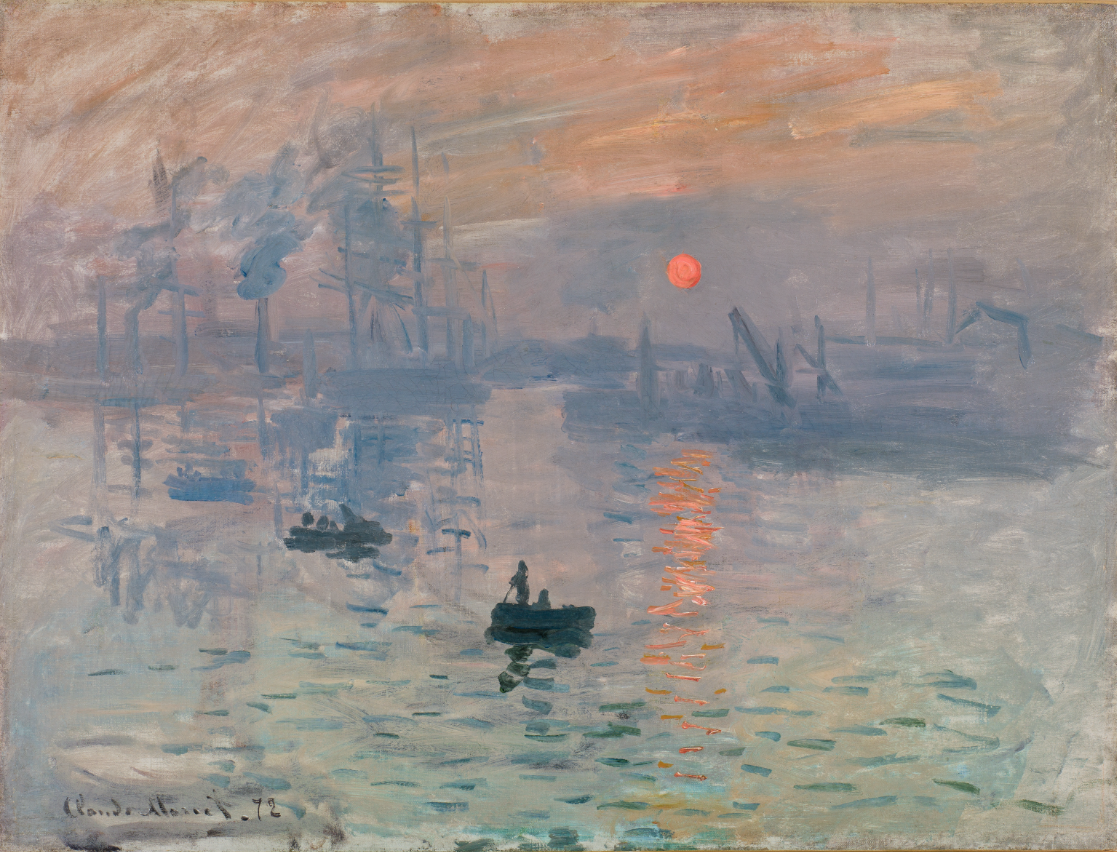
The story of Impressionism’s birth has been told so often, it’s more myth than historic event. Generally, the tale goes something like this: in 1874, a ragtag gang of disaffected artists reject the Paris Salon by staging an alternative exhibition, critics lambast the art, and the ‘impressionism’ movement is born.
It’s an inaccurate simplification, one the Musée d’Orsay is keen to counter and complicate in an encyclopedic new exhibition “Paris 1874: Inventing Impressionism.” The show arrives 150 years on from that exhibition and together with Washington’s National Gallery of Art, which will host the show in the Fall, the curators stress the primacy of context.
A scene from Musée d’Orsay’s virtual reality in which Monet paints the Le Havre seascape. Photo: Musée d’Orsay.
One approach arrives via “Tonight With the Impressionists,” a 45-minute virtual reality experience in which visitors flit between broad Parisian boulevards, Bougival’s plein-air painters, Monet’s hotel balcony, and the exhibition itself.
But, beyond art, what was going on in late 1800s Paris? Quite a lot, actually. The Third Republic was afoot with the French capital having endured siege in the Franco-Prussian war, barricade and bloodshed in the Commune insurrection, and aggressive transformation by diktat of Baron Haussmann.
The exterior of the building that held the exhibition in 1874. Photo: Musée d’Orsay.
Against this backdrop, 31 artists formed a co-op and launched a show in a photography studio north of the Seine. Sure, it was a riposte to the stuffy traditions of the Salon, but their reasons were as much financial as artistic. They wanted to control how their work was exhibited and sold.
Yes, the works shown by the Société Anonyme at 35 Boulevard des Capucines purported to be forward-looking, but there was no deep philosophy, no cohesive aesthetic. In fact, the “First Impressionist Exhibition,” the rather bland name by which the show has become known, is somewhat inaccurate: a mere seven of the 31 artists are considered Impressionists.
Claude Monet, Boulevard des Capucines (1874). Photo: Musée d’Orsay.
The exhibition was a critical and commercial failure. The group dissolved shortly thereafter and it would take several years for Impressionism to begin garnering the popularity it still enjoys today.
All the same, the show had its revolutions. The setting was new, two stories of eccentrically decorated interiors, flooded with light from the floor-to-ceiling windows. Once the sun set, gas lamps flickered on meaning that for a single franc, art lovers could visit after work. The d’Orsay show begins here, staging black-and-white photographs of the exhibition space before leading into the 130 works it has assembled.
Berthe Morisot, Port de Lorient (1869). Photo: Musée d’Orsay.
Many of the names swept up by the broad brush of Impressionism are on display here. There’s Edgar Degas with the twirl and step of his ballerinas, Paul Cézanne with his rural houses built of bold angularity, Edouard Manet and his earnest portrayals of modern life, Berthe Morisot’s young and fashionable scenes of light and whimsy. And, of course, there’s Claude Monet and his work Impression, Soleil Levant (1872), the hazy waterscape retrospectively offered up as the movement’s founding masterpiece.
There’s also much besides that doesn’t fit so neatly: an ornate bronze from Marius-Jean-Antonin Mercié, etchings both stern and bucolic from Félix Bracquemond, Camille Cabaillot-Lassalle’s oil painting of the 1874 Salon. One begins to question what exactly comprises Impressionism—and that’s precisely the point.
“Paris 1874: Inventing Impressionism” is on view at the Musée D’Orsay, Esplanade Valéry Giscard d’Estaing, Paris, France, through July 14, 2024. It travels to the National Gallery of Art, Washington D.C, September 8, 2024–January 19, 2025.